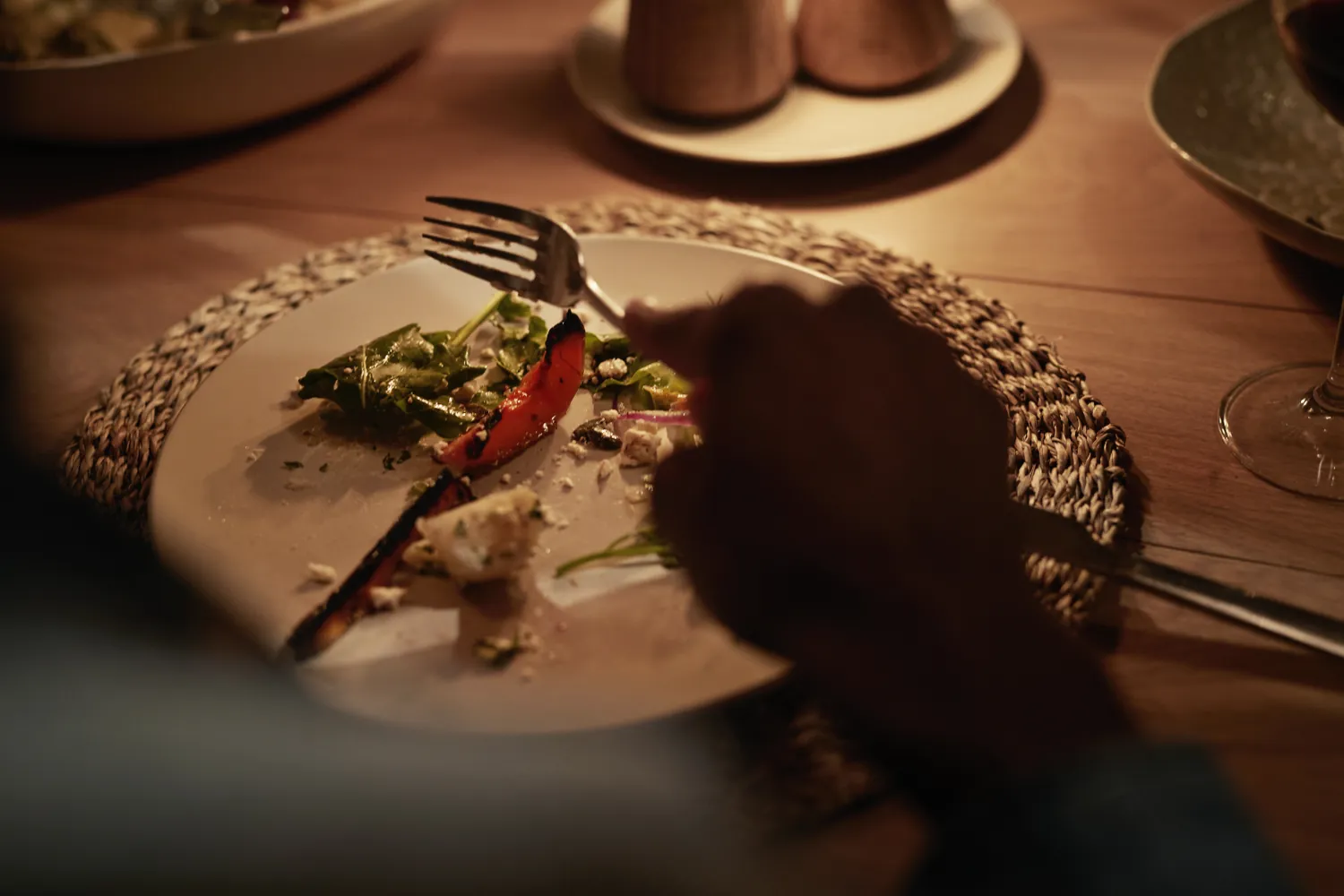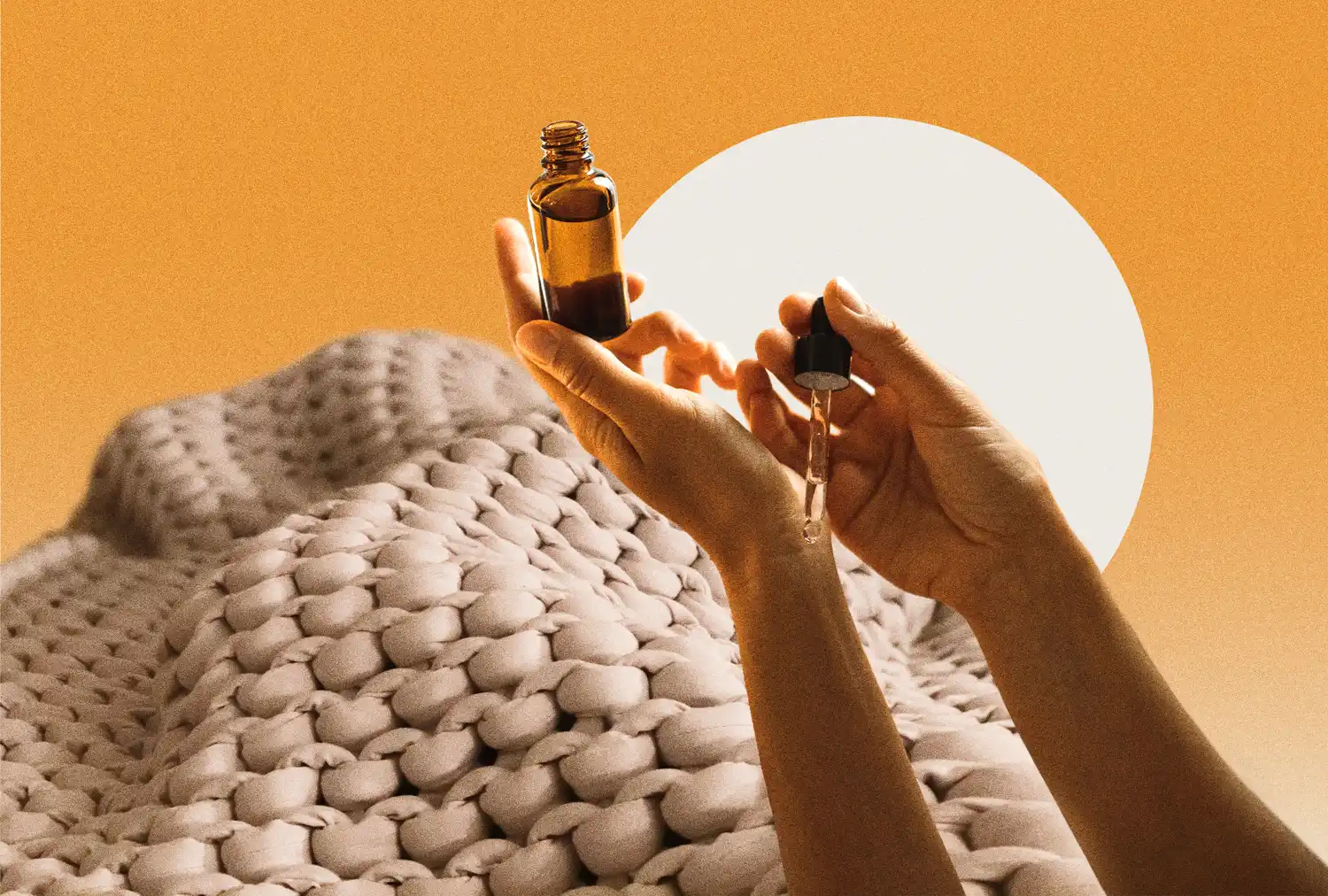The Ultimate Guide to Foods Messing Your Dreams
Sweet dreams are not made of cheese—or late-night nachos and energy drinks.
If you’ve ever woken up from an intense, cinematic nightmare after a heavy snack, you’re not imagining it. Certain foods can disrupt your sleep cycle, alter REM sleep, and make your dreams feel weirder, darker, or more memorable. This guide breaks down which foods may be messing your dreams, what science actually says, and how to eat at night for calmer, more restorative sleep.
In simple terms: food doesn’t script your dreams, but it can turn the volume up on them by impacting how deeply and smoothly you sleep.
Why Your Night Snacks Might Be Hijacking Your Dreams
Your brain does serious emotional and memory “clean-up” while you sleep, especially during REM. When late-night eating disrupts that process—through blood sugar spikes, gut discomfort, or nervous system activation—your dreaming brain may become more reactive.
That can mean:
- More vivid and bizarre dreams
- Emotional or anxious storylines
- Nightmares you actually remember in detail
Researchers and clinicians agree there’s no single “dream-destroying” food. But patterns in people’s reports, combined with what we know about sleep architecture, suggest specific foods are more likely to interfere.
Quick Answer: Which Foods Can Mess With Your Dreams?
Featured snippet-style summary (40–50 words):
Certain foods may indirectly intensify or disturb dreams by disrupting REM sleep, digestion, or blood sugar. Common culprits include spicy meals, heavy or high-fat dishes, excess sugar, large portions of cheese or dairy (especially with intolerance), caffeine, alcohol, and ultra-processed snacks eaten close to bedtime.
People Also Ask: Can Food Really Change My Dreams?
Does eating at night cause nightmares?
Late-night eating doesn’t automatically cause nightmares, but it can fragment REM sleep, raise body temperature, or trigger acid reflux and discomfort. When sleep is lighter or broken, you wake more often from REM and are more likely to remember intense or unsettling dreams.
Key point: disrupted sleep = louder dreams, not necessarily more negative content.
Which foods are most likely to be messing with your dreams?
Several categories stand out:
- Spicy foods: Can raise core body temperature and aggravate reflux, both linked with more awakenings and vivid dreams.
- Heavy, high-fat meals: Slow digestion, increase nighttime discomfort, and may contribute to REM fragmentation.
- Sugary foods and desserts: Rapid spikes and drops in blood glucose can activate the sympathetic nervous system, leading to restlessness and intense emotional dream content.
- Dairy (for sensitive individuals): Lactose intolerance or sensitivity can cause bloating or cramps, increasing micro-awakenings and odd or distressing dream recall.
- Caffeinated foods and drinks (chocolate, energy drinks, cola, matcha lattes too late): Delay sleep onset and reduce deep and REM sleep quality.
- Alcohol: Initially sedating, but later in the night it fragments sleep, suppresses early REM and rebounds with more vivid dreams.
These “foods messing your dreams” don’t directly plant specific storylines in your mind—but they set the stage for lighter, more reactive sleep.
Is it all in my head?
Expectations matter. If you strongly believe a certain food gives you nightmares, that anxiety can heighten arousal at night and color your dream experience. Stanford researchers highlight how anticipatory stress can alter sleep depth and dream tone, even when the food itself is neutral.
How Dreams and Sleep Stages Really Work
To understand why some foods messing your dreams feel so powerful, it helps to know what happens overnight.
- Stage 1 (NREM): Light dozing; easy to wake.
- Stage 2 (NREM): Body temperature drops; heart rate and brain waves slow.
- Stage 3 (NREM / deep sleep): Physical repair, immune support, and memory consolidation.
- REM sleep (about 90 minutes after sleep onset): Fast brain activity, vivid dreaming, emotional processing, muscle atonia.
This 90–120 minute cycle repeats 4–5 times a night. When digestion, hormones, or nervous system arousal interfere, you:
- Spend less time in restorative deep sleep
- Experience more broken REM periods
- Wake during or right after dreams, which makes them feel more intense, odd, or scary
Dreams are not random chaos; they reflect how well your brain is allowed to cycle, reset, and integrate your day.
The Science-Backed Link Between Food, Sleep, and Dreams
Research on exact “dream-foods” is still limited, but sleep and nutrition science is rapidly evolving. Emerging evidence (Harvard, 2024) and recent sleep labs point toward three major pathways:
Metabolic impact
- Large or high-sugar meals before bed can lead to glucose swings.
- These swings activate stress responses that may cause restless sleep and emotionally loaded dreams.
Digestive stress and inflammation
- Food intolerances (like lactose or gluten sensitivity) can trigger cramps, gas, or reflux.
- Discomfort pulls you into lighter sleep, increasing how often you surface from a dream.
Neurochemical effects
- Nutrients like tryptophan, magnesium, and certain antioxidants support melatonin and serotonin pathways.
- Deficits or excesses may tilt your nervous system toward either calmer or more reactive sleep.
Stanford researchers also emphasize that chronic stress, mental health, and screen exposure often play a larger role in nightmare frequency than any single snack—so food is one piece of a bigger 24-hour puzzle.
Foods Most Likely to Intensify or Disturb Your Dreams
1. Spicy Late-Night Meals
Spicy curries, hot wings, chili oils, and loaded tacos close to bedtime can:
- Raise core body temperature, which is associated with more fragmented REM
- Increase risk of acid reflux, especially when lying down
- Trigger startling, chase-style, or chaotic dreams you recall vividly
If you notice a pattern of wild dreams after hot sauce-heavy dinners, your body might be signaling overload.
2. Heavy, Fatty, or Fried Foods
Burgers, loaded fries, deep-fried snacks, thick cream-based pastas, or heavy cheese plates eat into your sleep quality by:
- Slowing gastric emptying
- Increasing nighttime awakenings
- Leaving you in lighter sleep stages where dreams feel more intense
These foods messing your dreams often do so by overworking your digestive system when your body is trying to power down.
3. Sugary Desserts and Refined Carbs
Think milkshakes, frosted cakes, candy, sweetened cereals, giant boba teas.
Potential effects:
- Blood sugar spikes → jittery nervous system
- Subsequent crash → cortisol release and micro-awakenings
- Emotional rollercoaster dreams or anxious, urgency-filled scenarios
4. Dairy for Sensitive Sleepers
Ice cream, pizza, mac and cheese, or big glasses of milk at night may not bother everyone. But for those with intolerance or sensitivity, they can:
- Cause bloating and gas
- Interrupt deep sleep
- Make dreams seem more vivid or uncomfortable simply because you’re waking more often
5. Caffeine-Containing Foods and Drinks
Chocolate, coffee ice cream, green or black tea, yerba mate, cola, and energy drinks consumed late can:
- Delay sleep onset
- Reduce total deep and REM sleep
- Lead to fragmented, hyper-detailed dreams when you finally do drift off
6. Alcohol and Ultra-Processed Snacks
Late drinks plus chips, instant noodles, or packaged sweets are a classic REM disrupter combo:
- Alcohol initially sedates, then causes REM rebound with intense dreams.
- Ultra-processed foods are linked to poorer sleep quality and more night awakenings.
Together, they don’t just encourage foods messing your dreams—they sabotage the entire recovery process your brain needs overnight.
Surprising Everyday Habits That Quietly Alter Your Dreams
Beyond the obvious culprits, a few 2025 lifestyle patterns are subtly shaping your dream world:
- Constant grazing while streaming: Mindless snacking late into the night keeps digestion active and delays natural melatonin rise.
- High-nicotine vapes + energy drinks: This combo ramps up arousal and reduces deep, stable sleep.
- “Healthy” huge bowls at 10 p.m.: Even nutritious meals (like oversized salads with fried toppings and heavy dressings) can be too much volume too late.
These aren’t inherently bad foods—but their timing, size, and pairing with screens or stress can amplify dream intensity.
Foods That Can Support Calmer Sleep and Nicer Dreams
You can’t fully control dream content, but you can create better conditions for more restful, less chaotic nights.
Nutrients and Foods That Help
Tryptophan-rich foods
- Turkey, chicken, eggs, yogurt (if tolerated), pumpkin seeds, tofu.
- Support serotonin and melatonin production, which may smooth sleep onset.
Magnesium sources
- Almonds, cashews, pumpkin seeds, black beans, edamame, spinach, some fish.
- May support relaxation and reduce nighttime restlessness.
Complex carbs + protein combos
- Oatmeal with nuts, whole-grain toast with nut butter, Greek yogurt (if tolerated) with berries.
- Steadier blood sugar = fewer 3 a.m. adrenaline jolts.
Tart cherries (Montmorency, Jerte Valley)
- 100% unsweetened tart cherry juice (about 8 oz morning and 1–2 hours before bed) has been associated with improved sleep quality.
Herbal supports
- Chamomile, lemon balm, or valerian root teas can encourage relaxation for some people.
Think of these as dream-friendly foods: they don’t guarantee perfect dreams, but they support a stable sleep environment where your brain can do its job.
How to Test If Foods Are Messing Your Dreams (Routinova Method)
Instead of guessing, run a simple 10–14 day self-experiment.
Track
-
Each evening, log:
- What you ate after 6–7 p.m.
- Caffeine, alcohol, and screen time
-
Each morning, record:
- Dream intensity (0–5), emotional tone, number of awakenings
-
Each evening, log:
Adjust one variable at a time
-
Example tests:
- Move spicy foods to lunch.
- Cut caffeine after 2 p.m.
- Swap heavy desserts for a lighter snack.
-
Example tests:
Notice patterns
- Do vivid nightmares follow certain meals?
- Do positive or neutral dreams show up on lighter, earlier dinners?
Refine your personal rules
- Build a short, individualized list: “Foods and habits that calm my nights” vs. “Things that reliably mess my dreams.”
This Routinova-style approach transforms vague suspicion into data-backed habits tailored to your body.
Practical Nighttime Eating Rules for Better Sleep and Dreams
Use these evidence-aligned guidelines to protect your sleep architecture and soften dream intensity.
Time it right
- Aim to finish your last full meal 2.5–3 hours before bed.
- If hungry later, choose a light, balanced snack.
Keep late snacks small and steady
-
Great options:
- A small bowl of oats with nuts
- A banana with peanut butter
- A boiled egg and a few whole-grain crackers
-
Great options:
Tame the triggers
-
Limit:
- Spicy, greasy, or fried foods at night
- Large portions of cheese or heavy cream sauces
- Sugary desserts right before bed
- Caffeine after mid-afternoon (earlier if you’re sensitive)
- Alcohol as a “sleep aid”
-
Limit:
Listen to your gut
- If you suspect an intolerance, notice whether those foods correlate with discomfort and intense or negative dreams.
- Consider discussing persistent symptoms with a healthcare professional.
Protect your nervous system
- Dim screens 60 minutes before bed.
- Keep your room cool; this balances any mild temperature rise from dinner.
- Add a brief wind-down routine: stretching, journaling, or breathing exercises.
Food matters—but stress, screens, and inconsistent sleep schedules often matter more. Aligning them creates a powerful buffer against chaotic nights.
New Real-Life Scenarios (2025) to Learn From
Use these modern examples to spot your own patterns:
Scenario 1: The Late-Night Scroll & Snack
- 11:30 p.m., you’re streaming and snacking on hot chips and soda.
- 3:00 a.m., you wake from a frantic dream, heart racing.
- Likely culprits: spicy, processed foods, sugar, blue light, and a delayed bedtime.
Scenario 2: “Healthy” but Heavy
- 9:45 p.m., you eat a huge grain bowl with spicy sauce, fried toppings, and kombucha.
- Sleep feels busy; you remember confusing, intense dreams.
- Lesson: quality is good, but portion and timing still matter.
Scenario 3: Calm, Supported Sleep
- 7:00 p.m., baked salmon, quinoa, roasted vegetables.
- 9:30 p.m., small tart cherry juice and handful of almonds.
- Sleep is smoother; dreams feel less chaotic.
- Reinforces: balanced evening eating supports more stable dream experiences.
Implementation Checklist: Build Your Dream-Friendly Night Routine
Follow this simple sequence for the next 2 weeks:
- Set your target bedtime and work backwards 3 hours for your last full meal.
- Choose lighter, balanced dinners most nights.
- Cap caffeine intake by early afternoon.
- Avoid high-spice, fried, and ultra-sugary foods within 3 hours of bed.
- If hungry, pick one small protein + complex carb snack.
- Dim lights and screens 30–60 minutes before bed.
- Log food, sleep, and dreams to spot your personal triggers.
Consistency—more than perfection—is what reshapes your nights.
Key Takeaways
- Certain foods don’t “control” your dreams, but they can disrupt REM sleep and make dreams feel more vivid, emotional, or disturbing.
- Usual suspects include spicy meals, heavy/fatty foods, sugary snacks, caffeine, alcohol, and trigger foods like dairy for sensitive individuals.
- A pattern of lighter, earlier, and more balanced evening eating supports deeper sleep and calmer dream recall.
- Individual responses vary; tracking your habits is the smartest way to identify which foods are messing your dreams.
- Beyond food, stress management, sleep hygiene, and screen boundaries are proven levers for better sleep and a more peaceful inner night life.




